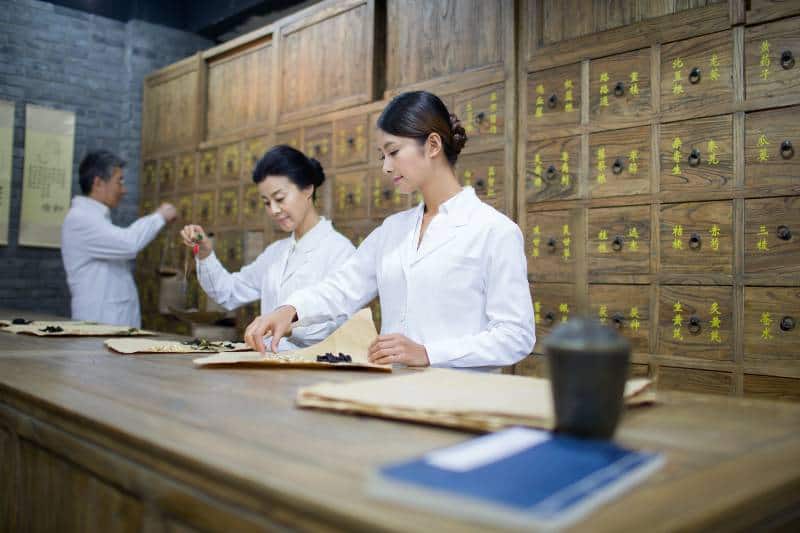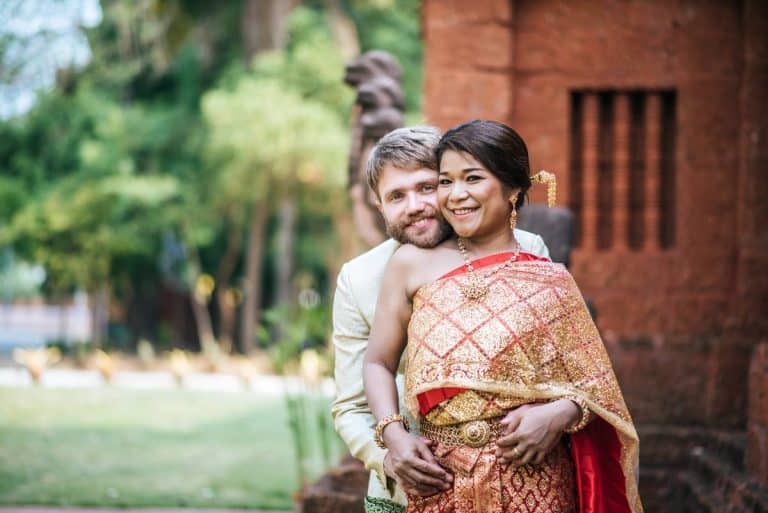Bridging the Gap: Thai Traditional and Modern Medicine
For centuries, medicine in Thailand has been a combination of traditional and modern practices. From ancient healing rituals to the relatively recent introduction of modern medical treatments, this Southeast Asian country has an age-old history when it comes to healthcare. For visitors and locals alike, understanding both sides of this equation—and their respective benefits—can be key in making informed decisions about one’s own well-being.
This blog post will explore some of the most noteworthy features of Thai medicine—debunking popular myths along the way and introducing readers to the wonders that await them when seeking treatments from reliable practitioners throughout Thailand. Read on for your unique insider’s guide to traditional and modern medicines in Thailand!
Traditional medicine posits multiple causes for illnesses, whereas modern medicine generally attributes them to a single cause. Additionally, traditional medicine employs distinct diagnostic approaches and treatment methods tailored to individual diagnoses, diverging from the practices of modern medicine.
Key Takeaways
- Thailand’s integration of traditional and modern medicine offers a comprehensive approach to health, ensuring that patients receive well-rounded care.
- By valuing and incorporating traditional practices, Thailand ensures that its rich medical heritage remains relevant and cherished.
- The continuous efforts to merge old and new medical practices highlight Thailand’s commitment to innovation and progress in healthcare.

The Roots of Traditional Thai Medicine
Traditional Thai medicine has deep historical roots, dating back thousands of years. It is an amalgamation of influences from various cultures, primarily Indian (Ayurvedic medicine) and Chinese (Traditional Chinese Medicine). Alongside these external influences, traditional Thai medicine incorporated an array of indigenous healing arts like herbalism and spiritual practices linked to Buddhist philosophy.
Thailand’s traditional medicine initially functioned as home remedies for common ailments. It gradually evolved into a more formalized healthcare approach under the reign of King Rama III in the 19th century. That time saw the establishment of the famous Wat Pho temple in Bangkok, which became a center for the study of traditional Thai medicine.
Key Practices and Treatments
Thai Massage: Also known as Nuad Thai, Thai massage incorporates aspects of acupressure, yoga, and reflexology. It uses stretching and gentle pressure along the body’s energy lines to increase flexibility, relieve muscle and joint tension, and balance the body’s energy systems. In 2019, Traditional Thai massage was added to UNESCO’s Intangible Cultural Heritage list.
Herbal Remedies: thai traditional medicine wisdom extensively utilizes local plants and herbs for their medicinal properties. Over 1,000 species of medicinal plants are recognized in the Thai pharmacopeia. These plant-based remedies are used to treat a wide range of conditions, from common colds to chronic diseases.
Spiritual Healing: An integral part of Thai traditional healing involves spiritual practices, connecting to Buddhist beliefs. Amulets, charms, and magical tattoos (Sak Yant) are some examples that are believed to ward off evil spirits or attract good fortune and are still widely used in Thai society.
Modern Medicine in Thailand
Despite the strong foundation in traditional medicine, Thailand has embraced modern medicine, resulting in a healthcare system that offers world-class medical facilities and services.
Modern medicine predominates in urban areas and professional healthcare settings, offering the latest treatments using advanced technology, often under international healthcare standards. The country is famous for its medical tourism due to the high-quality care provided at more affordable prices compared to Western countries.
Even as modern medicine continues to advance, traditional Thai medicine remains integral to the nation’s healthcare system. The Thai government has been proactive in incorporating traditional medicine into public healthcare. For instance, Thai traditional medicine hospitals have been established, and herbal products have been included in the National List of Essential Medicines. Furthermore, traditional and modern medicine are often combined in treatments, known as integrative medicine, harnessing the strengths of both systems.
This harmonious blend of traditional and modern medical systems makes Thailand’s healthcare landscape unique, and it exemplifies how a country can maintain its rich cultural heritage while adapting to the demands of advanced medical science.
Modern Medicine in Thailand
The Rise and Development of Western Medicine
Alongside its rich history of traditional medicine, Thailand has seen a significant rise in the adoption of Western, or modern, medicine over the course of the 20th century. The first significant introduction of Western medicine to Thailand dates back to the 19th century which witnessed King Rama V bringing in Western-trained doctors and establishing hospitals that followed Western medical practices.
This marked a new era of medical development in Thailand. With increasing trade, travel, and cultural exchange, the allure of Western medical practices only grew more substantial. Advanced treatments, pharmaceuticals, surgical procedures, and the overall approach to disease diagnosis and prevention symbolized a new, scientific way of combatting illnesses.
The shift was gradual yet consistent, with Western education gaining value, and Thai students returned from Western medical programs bringing with them new knowledge and techniques. Public health initiatives like vaccination campaigns, sanitation improvements, and the establishment of healthcare facilities were carried out with mounting fervor.
In the latter half of the 20th century, advancements in technology further bolstered this shift towards Western medicine in Thailand. High-tech equipment, medical imaging, and sophisticated surgical techniques began to permeate Thailand’s healthcare infrastructure, a trend that continues to this day.
Current Healthcare Infrastructure and Practices
Fast forward to the current era, modern medicine in Thailand is characterized by a robust, dual-track healthcare system. This refers to a universally accessible public healthcare sector running parallel to a vibrant, competitive private healthcare sector.
Public healthcare in Thailand is administered through the National Health Security Office, providing universal healthcare to Thai nationals. The public hospitals are well-staffed, often with highly trained medical practitioners and have the capacity to perform complex surgeries or offer specialized medical services.
On the other hand, private healthcare, which is often the go-to for expats and medical tourists, is known for its world-class facilities and comprehensive care. Famed for significantly shorter wait times and luxurious amenities, private hospitals often feel more like five-star hotels. It’s no surprise that Thailand has emerged as a top destination for global medical tourism.
A notable aspect of Thailand’s healthcare sector is the blend of traditional and modern medicine, known as integrative medicine. This is evident in many hospitals and clinics, where natural, holistic treatments are offered alongside or as part of a treatment plan involving modern, scientific methods. Approaches like herbal treatments, Thai traditional massage, or meditation might be integrated into conventional treatment strategies.
In addition, the country has made remarkable strides in fields like stem cell research, cancer therapy, organ transplants, and plastic surgery, often incorporating cutting-edge techniques and technology.
Unused to resting on its laurels, Thailand continues to move ahead in the field of medical technology. The focus lies not just on treating diseases but also on enhancing the overall quality of life. The patient-centric approach coupled with the wisdom of traditional practices makes Thailand’s healthcare system a unique blend of the past, present, and future.
Challenges in Integration
While Thailand has been striving for a harmonious integration of traditional and modern medical practices, there remain various challenges in achieving this ideal. Such challenges can primarily be grouped into differences in approach and philosophy, as well as skepticism and resistance from practitioners of both medicine types.
Differences in Approach and Philosophy
Traditional Thai medicine is anchored in a holistic approach that focuses on the person’s physical, emotional, and spiritual well-being. Treatments in this form of medicine are aimed at restoring balance within the body’s energy systems. In contrast, modern medicine adopts a more evidence-based, scientific approach focused on diagnosing and treating specific diseases and symptoms.
Traditional Thai medicine relies on multitudes of herbal remedies and indigenous techniques passed down through generations. It balances ancient wisdom with practical knowledge to treat ailments in a natural, non-invasive manner. On the other hand, modern medicine is grounded in scientific research, laboratory testing, and the use of pharmaceuticals and high-tech equipment.
These differences in approach often translate into challenges when attempting to integrate traditional and modern medical practices. The two systems may be characterized by different terminologies, diagnostic criteria, and distinct treatment modalities. A common ground to mutually understand, cooperate and create synergy between both practices can prove to be a demanding endeavor.
Skepticism and Resistance from Both Sides
Another challenge in this integration lies in the skepticism, and potentially resistance, from practitioners and devotees of both traditional Thai medicine and modern medicine. Oftentimes, practitioners of modern medicine may regard traditional medicine as unscientific, outdated, or lacking empirical evidence to support its efficacy. Such skepticism may undermine the credibility of traditional medicine as a valid healthcare option.
Conversely, traditional medicine practitioners may view modern medicine as too invasive, technology-reliant, and reductionist, with concerns that it may devalue holistic practices or eliminate the emotional and spiritual aspect from healing. This resistance might deter a productive collaboration between both systems.
Establishing trust, mutual respect, and understanding becomes pivotal in overcoming these challenges. Steps like research, documentation, and standardization of traditional medicine practices and remedies can be undertaken to validate their benefits and improve collaboration with modern medical practitioners. Simultaneously, awareness should be created among modern medicine professionals on the merits of traditional practices to generate a more open-minded approach.
Benefits of Integration
The integration of traditional and modern medicine in Thailand, while facing challenges, also brings multiple advantages. Pivotal among them is the holistic approach to health, wellness, and the increased accessibility and options for patients.
Holistic Approach to Health and Wellness
One significant benefit of this integration is the promotion of holistic health and wellness. Modern medicine, often viewed as highly specialized and disease-centric, can focus heavily on symptomatic treatment, while traditional medicine takes a holistic approach that addresses the person’s entire well-being ‒ the body, mind, and spirit.
Incorporating Traditional Thai medicine into the healthcare system can fill this gap, ensuring that patients receive well-rounded care. Treatments in traditional medicine, such as herbal remedies or Thai massage, can effectively manage stress, enhance overall well-being, and improve the quality of life, complementing the more medicalized treatments of the modern system.
The combined approach brings about a broader understanding of health, acknowledging both the visible symptoms of diseases and the underlying causes related to lifestyle, mental health, or spiritual imbalance. This holistic perspective can lead to more effective prevention strategies and comprehensive treatment plans.
Increased Accessibility and Options for Patients
An integrated system also means increased accessibility and options for citizens seeking healthcare. By recognizing traditional medicine, the Thai government effectively makes such practices widely available, increasing the breadth of healthcare offerings and enhancing patient choice.
Not everyone responds well to the same treatments, and having alternatives provides more opportunities for people to find the care that fits their needs best. For example, some patients may find that certain herbal remedies or massage therapies provide relief where pharmaceuticals could not.
Moreover, this increased accessibility is especially beneficial in rural areas where traditional medicine is likely more prevalent, and modern healthcare structures may not be as accessible. By ensuring traditional medical systems are recognized and incorporated into the broader healthcare system, it ensures more equitable healthcare delivery across urban and rural divides.
Case Studies
The integration of traditional and modern medicine in Thailand is not a mere concept or theory; it’s already being put into practice with phenomonal success in several hospitals and clinics across the country. Here are a couple of real-life examples that showcase this successful integration.
1. Siriraj Hospital, Bangkok
Siriraj Hospital, affiliated with Mahidol University, is the oldest and largest hospital in Thailand. In addition to being a leading institute for modern medicine, it has a dedicated department of Thai traditional medicine. Here, traditional practitioners work closely with Western-trained doctors to provide integrative treatment for patients.
One extraordinary example is the treatment of stroke patients. In addition to the standard modern medicine protocols for stroke, patients also receive Nuad Thai (Thai massage) as part of their rehabilitation program. This integrative approach has demonstrated promising results, enhancing patient recovery and improving their quality of life.
2. Chaophraya Abhaibhubejhr Hospital, Prachinburi
Chaophraya Abhaibhubejhr Hospital, established in 1909, is famous for its integration of traditional and modern medicine. It is a pioneer in Thailand for developing traditional herbal medicine, conducting research, and promoting education around it.
Here, patients have the choice of treatments ranging from modern medical practices to traditional Thai treatments. Moreover, the hospital has its pharmaceutical factory that produces herbal products that comply with modern pharmaceutical standards. The revenue generated is used to provide free or low-cost healthcare services for patients.
In one example, the hospital successfully treated diabetic patients using the extract of the “Fah Talai Jone” herb, known to have properties controlling blood sugar levels. Integrating this traditional herbal remedy alongside modern diabetic treatments offered a more comprehensive and effective approach to managing the disease.
3. Hua Chiew Hospital, Bangkok
Hua Chiew Hospital, run by the Chinese Buddhist order of Fo Guang Shan, exemplifies the integration of traditional Chinese medicine with modern medical practices. The hospital has departments for both modern and traditional medical care, offering services like acupuncture, herbal medication, qigong, and meditation, demonstrating the successful blend of age-old practices and modern healthcare.
These case studies illustrate Thailand’s commitment to integrating traditional and modern medicine, showcasing how hospitals and clinics are valuing historical healing systems alongside contemporary techniques to provide holistic, comprehensive, and patient-centered care.
The Role of Government and Policy
The Thai government, through its various agencies and policies, plays a central role in promoting and regulating the integration of traditional and modern medicine. With a focus on balancing the collective benefits of these two health systems, the government actively supports both research and development in traditional treatments and the continuous improvement of modern medicine.
Efforts to Promote and Regulate Integration
The Thai Ministry of Public Health has been instrumental in promoting the integration of traditional and modern medicine. The enactment of the National Drug Act B.E. 2510 is one such example, allowing the production, sale, and use of traditional medicine and herbal products.
In 2002, this commitment was further bolstered with the establishment of the Department for the Development of Thai Traditional and Alternative Medicine (DTAM). DTAM’s role is to develop traditional Thai medicine, promote research, conserve knowledge, and regulate these practices.
The Thai government has also worked on policies to integrate traditional medicine practices into public health services, recognizing them officially within the national healthcare scheme. This not only validates traditional medicine but also provides people with affordable and diverse treatment options.
Support for Research and Development in Traditional Treatments
Government support also extends to encouraging research and development in traditional treatments. The Ministry of Public Health, through DTAM and other agencies, funds and conducts several research programs related to Thai traditional medicine. The aim is to accumulate scientific evidence, document knowledge, standardize practices, and ensure the safety and efficacy of traditional remedies.
Chaophraya Abhaibhubejhr Hospital, known for its research and development of herbal products, is a prime example of this commitment. In partnership with the government, it established the Thai Traditional Medicine Information Center, which serves as a comprehensive source of information on herbal plants and traditional medicines.
Moreover, the government has been active in preserving indigenous medical wisdom by documenting and registering it as intellectual property. This not only safeguards traditional knowledge from being lost but also provides a rich resource for future research and development.
Future Prospects
Looking ahead, we can anticipate a bright future for integrated medicine in Thailand, which is expected to unlock several transformative advantages in the healthcare sector. These developments are likely to catalyze a progressive change in the overall perception of wellness and medication at the national and global level.
Strengthening of Research and Development
In the future, we can anticipate further strengthening of research and development activities centered around traditional Thai practices and remedies. These will be directed not only at validating traditional therapies but also at developing innovative practices that blend traditional wisdom with modern science effectively. Local medicines, previously unexplored or underutilized, have the potential to be developed into efficient and affordable treatments for various health conditions.
Expanding Accessibility and Healthcare Equity
As more significant strides are taken in the integration of traditional and modern medicine, the accessibility and equity of healthcare services are likely to expand. Traditional medicine practices, which are often more ubiquitous and cost-effective in rural areas, will become part of the country’s health care system, ensuring that quality care is accessible to all corners of Thailand.
Increased Global Interest
As the successful integration of traditional and modern medicine in Thailand becomes more evident, it’s likely to garner deeper global interest. The rest of the world will look at Thailand’s policies and practices, interested in potential learnings and applications within their contexts. This can pave the way for global acceptance of traditional medicine alongside modern practices, significantly contributing to worldwide healthcare goals.
Enhanced Focus on Preventive Care
The inclusion of traditional medicine philosophy is likely to drive towards a more preventative approach in healthcare. By integrating the holistic and wellness-centered philosophy of traditional medicine, the focus of health could shift from mere disease treatment to prevention and overall well-being. This is expected to enhance the quality of life and reduce healthcare costs in the long run for Thailand.

Traditional and Modern Medicine in Thailand FAQs
What are the most popular integrated treatments in Thailand today?
Some of the most popular integrated treatments in Thailand include herbal medicine, massage therapy, acupuncture, and dietary supplements.
How do Thai medical professionals view the integration?
Thai medical professionals generally view the integration of traditional and modern medicine positively, as it provides patients with a more holistic treatment approach and expands their options.
Are traditional medicines regulated in Thailand?
Yes, the production, sale, and use of traditional medicines are regulated in Thailand through the National Drug Act B.E. 2510 and the Department for the Development of Thai Traditional and Alternative Medicine (DTAM).
Are there any Thai hospitals that specialize in integrated medicine?
Yes, there are several hospitals in Thailand that specialize in integrated medicine, such as the Chaophraya Abhaibhubejhr Hospital known for its research and development of traditional Thai remedies. Additionally, many public hospitals also offer integrated medicine services.
How does integrated medicine benefit patients in Thailand?
Integrated medicine benefits patients in Thailand by providing them with more affordable, diverse, and holistic treatment options. It also promotes the preservation of traditional knowledge and enhances accessibility and equity in healthcare services.
Are traditional Thai treatments scientifically proven?
Conclusion
Thailand’s combination of traditional and modern medicine is an impressive feat that sets the country apart in terms of medical care. Not only does it benefit patients by offering more varied treatments but also works to conserve and remember traditional techniques that have served humanity for centuries.
Despite efforts to merge existing healthcare models, medical professionals remain aware of the disparities between them and continue to ensure quality control in order to provide all Thais a safe and effective form of treatment. This places Thailand at the forefront of healthcare innovation, inspiring other nations around it to revitalize their own ancient healing practices.
If you’re considering living in Thailand and want to make sure your health is taken care of, then subscribe to our newsletter for more information or reach out with any questions. Only through exploring these innovative methods can we truly understand its potential worldwide.






